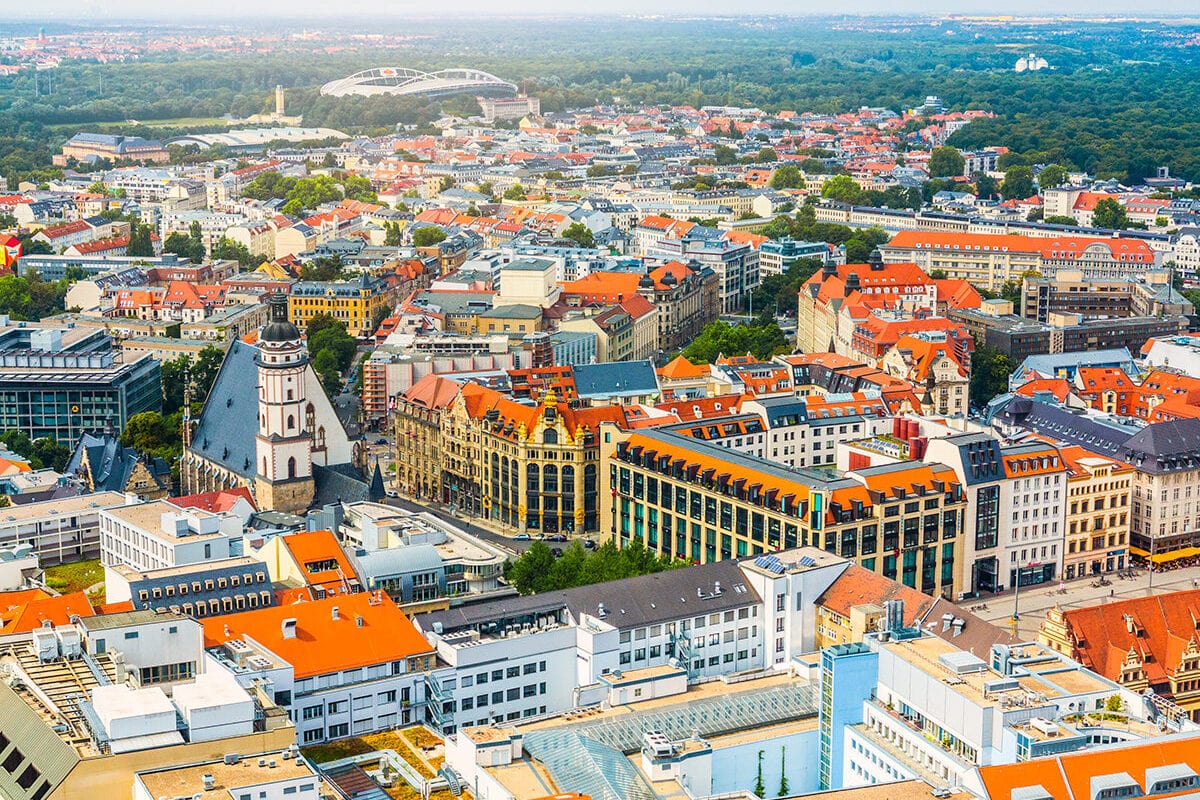Leipzig is a city that combines centuries of history, rich cultural heritage and a dynamic rhythm of modern life. It is often called the “Little Paris” because of its unique atmosphere, numerous cafés and lively streets. Leipzig has witnessed important historical events and has been a place where great talents flourished. Here are interesting and educational facts about Leipzig that you may not have known and that will help you feel the true spirit of this German city.
- Leipzig was first mentioned in historical records in 1015, making it one of the oldest cities in Germany. The name of the city comes from a Slavic word meaning “place near linden trees.” This reflects the Slavic roots of the region in ancient times.
- Leipzig was one of the largest trade centers in medieval Europe. Its fairs attracted merchants from across the continent and were among the most important economic events of the era. Today the city still maintains its status as a major business hub.
- Leipzig is home to one of Germany’s oldest universities, Leipzig University, founded in 1409. Among its alumni are prominent figures such as Johann Wolfgang von Goethe and Gottfried Wilhelm Leibniz. The university continues to play an important role in the city’s scientific and cultural life.
- The city became a major musical center thanks to composers like Johann Sebastian Bach, who worked in Leipzig for over 27 years. He served as the musical director of St. Thomas Church and composed many of his masterpieces there. Today Leipzig is often referred to as the City of Bach.
- In Leipzig you will find the famous St. Thomas Church, where one of the oldest and most renowned boys’ choirs in the world, the St. Thomas Choir, still performs. This choir has been in existence for over 800 years and is a symbol of the city’s musical tradition. Their concerts attract visitors from all over the world.
- Leipzig played a key role in the peaceful revolution of East Germany in 1989. It was here that weekly “prayers for peace” were held at St. Nicholas Church, eventually turning into mass demonstrations against the regime. These events were an important step toward the fall of the Berlin Wall.
- Leipzig Zoo is considered one of the best in Europe and one of the most innovative in the world. It features the enormous tropical pavilion “Gondwanaland,” recreating the environments of three continents. The zoo actively participates in programs to protect endangered animal species.
- Leipzig is the city with the most bridges in Germany after Hamburg. Its network of rivers and canals gives the city a unique charm and provides opportunities for water tours. Leipzig is sometimes called the “Little Venice” because of its waterways.
- The famous German writer Johann Wolfgang von Goethe studied at Leipzig University. It was here that he wrote the first fragments of his masterpiece “Faust.” The city is often mentioned in his letters and literary works.
- Leipzig became an important center of publishing as early as the sixteenth century. Its famous book fairs became the model for the modern Leipzig Book Fair. Publishing still plays a significant role in the city’s economy today.
- The city is home to the monumental Monument to the Battle of the Nations, commemorating the victory over Napoleon in 1813. It is one of the largest monuments in Europe, standing 91 meters tall. From the top platform, there is a stunning view of Leipzig.
- Leipzig has one of the oldest passenger railway station systems in the world. Leipzig Central Station is the largest railway station in Europe by floor area. It combines historic architecture with modern technologies.
- The city is famous for its love of art and contemporary culture. Leipzig’s art scene is thriving, especially thanks to the so-called “New Leipzig School” of painters. The Spinnerei art district has become an important center for contemporary art in Europe.
- Leipzig is home to one of the largest squares in Germany, Augustusplatz. It impresses with its vast open space and historic buildings. The square is a popular venue for festivals, concerts and public events.
- One of the oldest cafés in Europe, “Café Zum Arabischen Coffe Baum,” is located in Leipzig and was opened in 1711. Famous patrons such as Bach and Leibniz visited this café. It still operates today, preserving the atmosphere of old Germany.
- Leipzig is often referred to as the “City of Heroes” because of the active participation of its citizens in peaceful protests and cultural transformations. Today the city is an example of successfully combining historical heritage with modern innovation. Leipzig continues to grow while preserving its unique identity.
- The city hosts one of the world’s oldest opera houses, the Leipzig Opera, founded in 1693. The opera house boasts rich traditions and a high standard of performances. Each year it stages numerous premieres and international festivals.
- Leipzig is also known for its parks and green spaces. The city is home to one of Germany’s largest urban forests, Clara Zetkin Park. It offers opportunities for relaxation, sports and enjoyment of nature.
- Leipzig is rapidly developing as a center of science and technology. Many research institutes, start-ups and technology companies operate in the city. This makes Leipzig an attractive destination for young professionals and investors.
- Every year Leipzig hosts one of Germany’s oldest Christmas markets. The market has a centuries-old tradition and is famous for its special festive atmosphere. Visitors can enjoy traditional foods, buy handcrafted goods and attend open-air concerts.
These interesting facts about Leipzig reveal how extraordinary and diverse this city is. Leipzig impresses with its ability to blend cultural heritage with innovation, using the past as a source of inspiration for the future. By learning incredible facts about Leipzig, we gain a deeper understanding of its unique atmosphere and unstoppable energy. Fascinating facts about this city inspire new journeys and discoveries.





